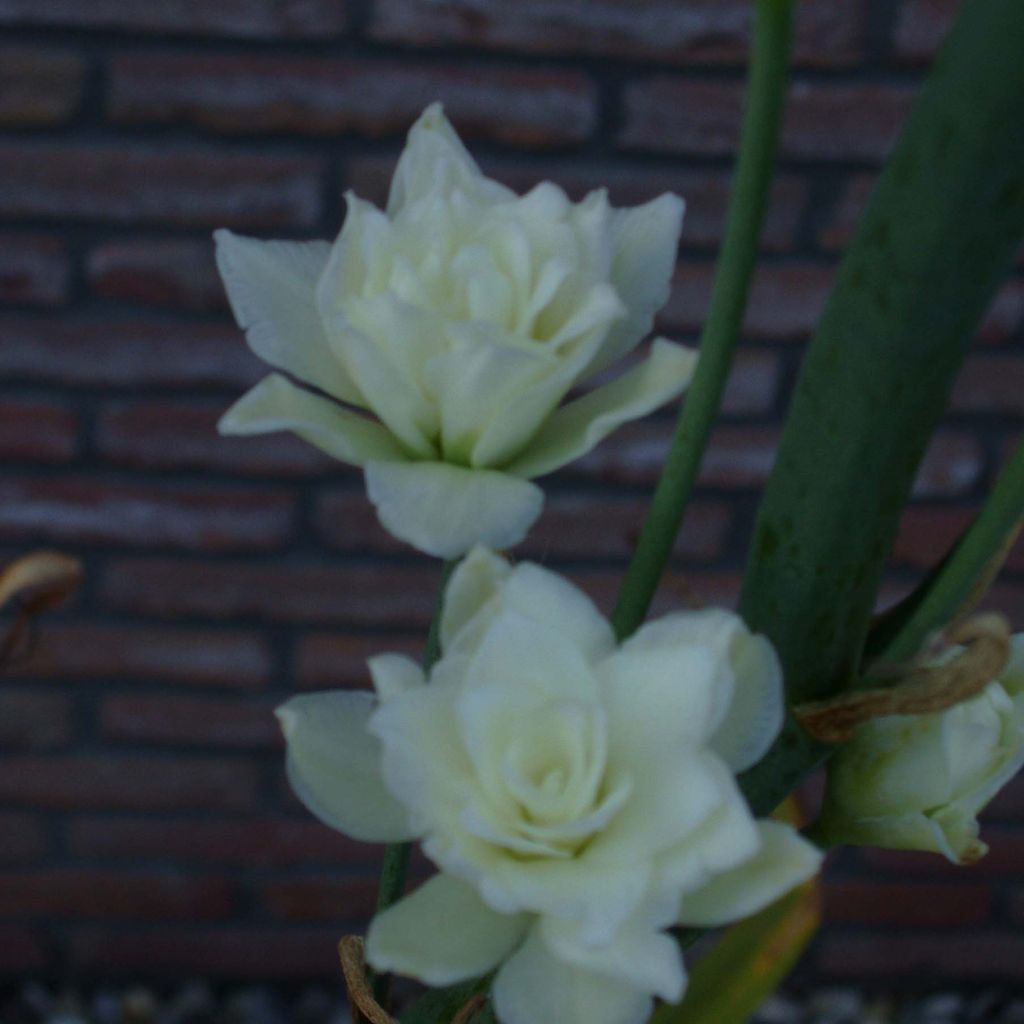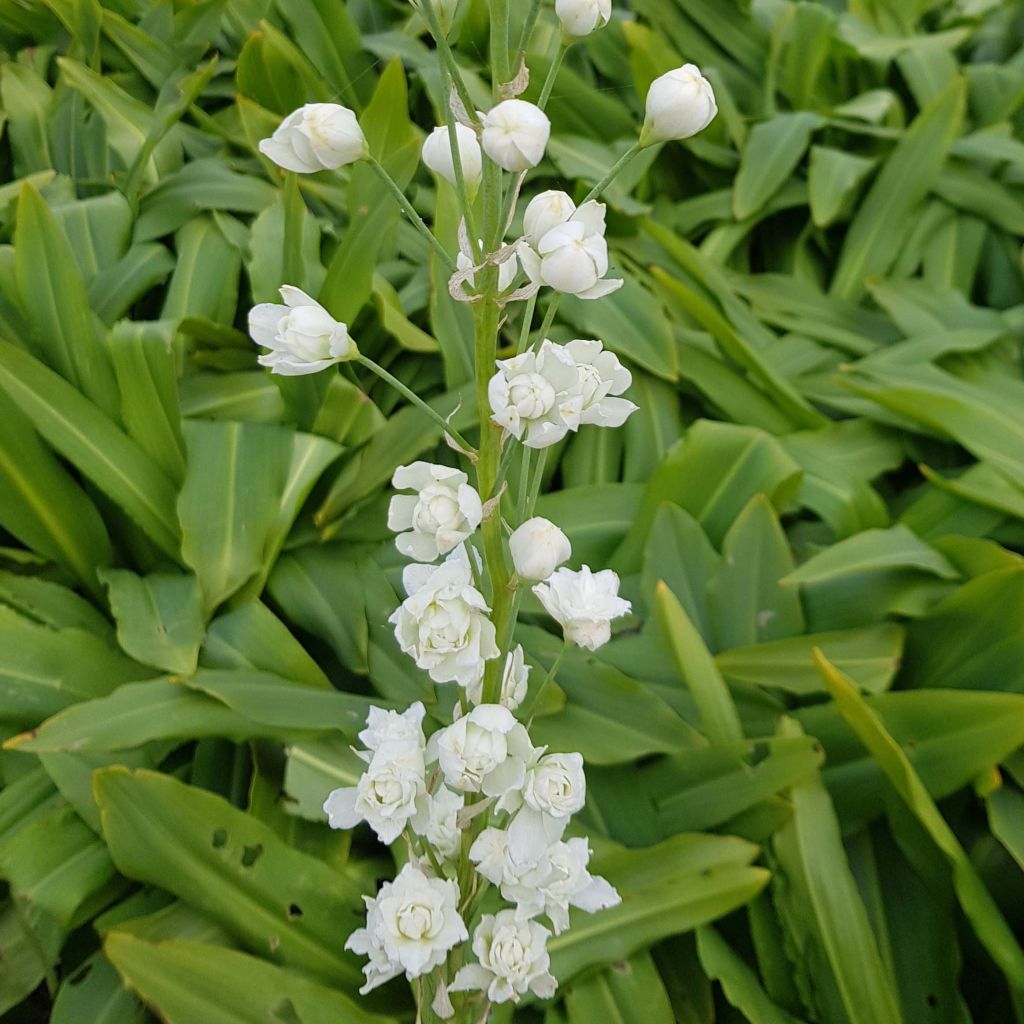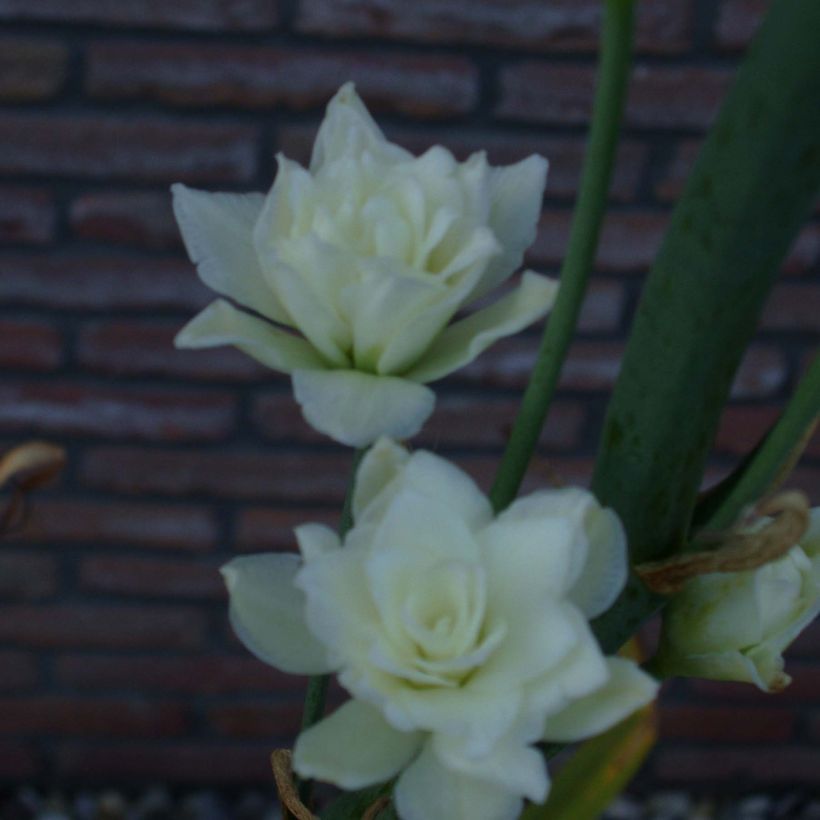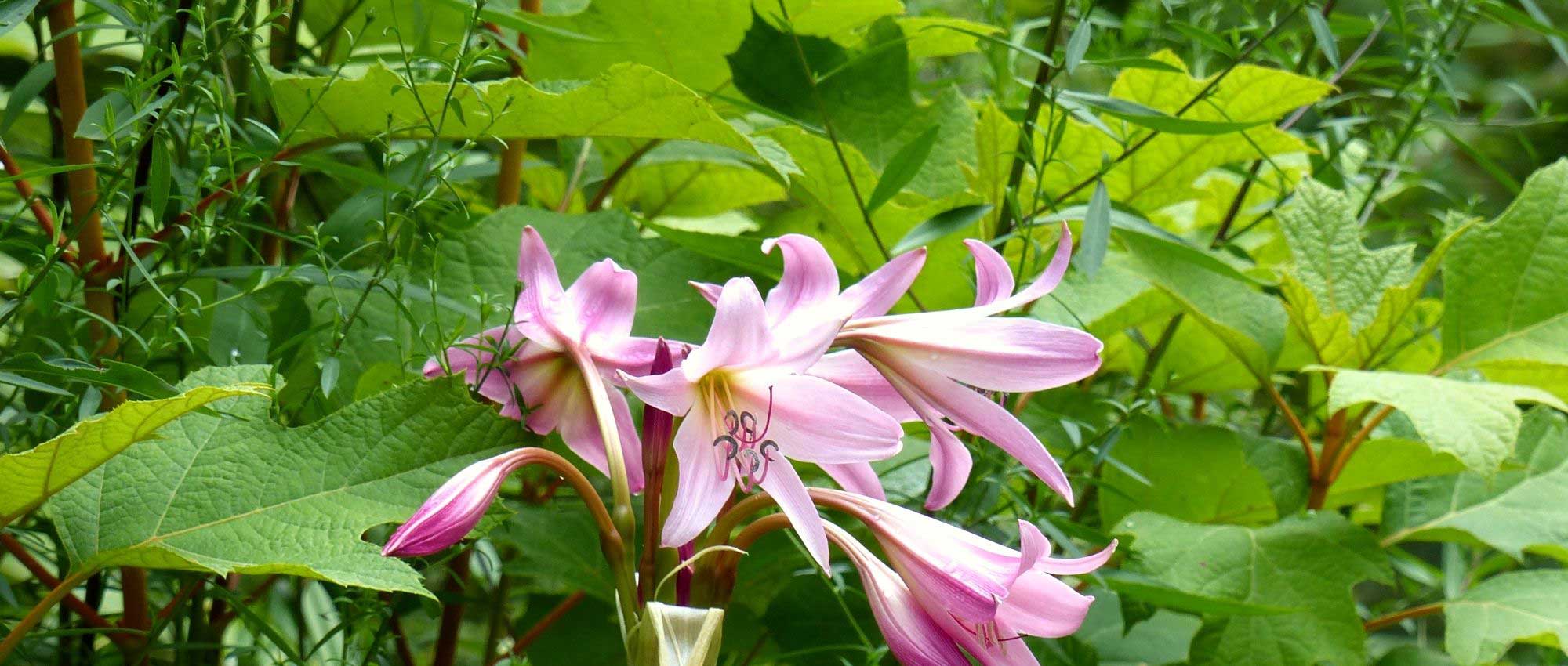

Galtonia candicans Moonbeam - Summer Hyacinth


Galtonia candicans Moonbeam - Summer Hyacinth
Galtonia candicans Moonbeam - Summer Hyacinth
Galtonia candicans Moonbeam
Summer Hyacinth, Cape Hyacinth, Spire Lily
Only 3 bulbs were planted correctly, but only 2 have grown.
Brigitte D, 19/08/2024
Special offer!
Receive a €20 voucher for any order over €90 (excluding delivery costs, credit notes, and plastic-free options)!
1- Add your favorite plants to your cart.
2- Once you have reached €90, confirm your order (you can even choose the delivery date!).
3- As soon as your order is shipped, you will receive an email containing your voucher code, valid for 3 months (90 days).
Your voucher is unique and can only be used once, for any order with a minimum value of €20, excluding delivery costs.
Can be combined with other current offers, non-divisible and non-refundable.
Home or relay delivery (depending on size and destination)
Schedule delivery date,
and select date in basket
This plant carries a 6 months recovery warranty
More information
We guarantee the quality of our plants for a full growing cycle, and will replace at our expense any plant that fails to recover under normal climatic and planting conditions.
Would this plant suit my garden?
Set up your Plantfit profile →
Description
Galtonia candicans Moonbeam is a very beautiful double-flowered form of the Cape hyacinth, which is also distinguished by its more vigorous growth. Its flowering stem stands upright in summer, adorned with double bell-shaped flowers resembling tiny white roses. Despite its South African origins, this bulb tolerates normal winters quite well, when planted in well-drained soil and with the crown protected by mulch. Charming in sunny borders, its lightly scented flowers are also good for cutting.
The Moonbeam Cape hyacinth belongs to the hyacinth family. This cultivar is notable for its vigour and perfectly double flowers and was discovered in a garden in New Zealand in 1989. Its ancestor, Galtonia candicans, grows spontaneously in the meadows of the Natal and Lesotho provinces in South Africa. This bulb starts to grow in spring with rosettes of large, semi-erect, linear, tapered, bluish-green leaves, 50 cm (20in) to 1 m (3ft) long. The flowering is spectacular and prolonged. Flowering stems, which can reach up to 1.50 m (5ft) high in rich soil, appear from July to September. They are cylindrical and topped with a 40 cm (16in) spike of 20 to 40 pendulous, double, cream-white flowers with a waxy texture. They have a light vanilla fragrance. Each bulb can produce up to 3 flowering stems at the same time. The above-ground vegetation dries up in autumn and disappears in winter.
Galtonia Moonbeam will thrive in the garden in a very sunny location sheltered from strong winds. The bulb is especially sensitive to excess water in winter, which is why it is important to provide good drainage in regions with humid winters. If in doubt, overwinter the bulb in a dry, frost-free location or grow it in a pot. Plant this Moonbeam Cape hyacinth in a large flower or shrub bed with Agapanthus, crocosmias, and daylilies for example. These plants have the same cultural requirements and bloom at the same time.
Report an error about the product description
Galtonia candicans Moonbeam - Summer Hyacinth in pictures


Plant habit
Flowering
Foliage
Botanical data
Galtonia
candicans
Moonbeam
Iridaceae
Summer Hyacinth, Cape Hyacinth, Spire Lily
South Africa
Planting and care
Plant Galtonia Moonbeam bulbs at a depth of 15 cm (6in) in rich and well-drained soil, 15 cm (6in) apart. In heavy soil, plant the bulb in a mixture of compost and coarse sand, or even gravel. An acidic soil is preferred but limestone is tolerated (without excess). This bulb needs water during its growth, in spring and summer. However, excessive moisture can be harmful to it in winter. Place a thick mulch of dead leaves or straw on the crown in winter and remove it at the beginning of spring. In very cold and humid regions, it is best to dig up the bulbs at the end of the season and store them in an unheated room, in a container filled with sand.
This plant is quite easy to grow in a pot: 1 bulb per pot with a diameter of 18 cm (7in).
Planting period
Intended location
Care
Planting & care advice
-
, onOrder confirmed
Reply from on Promesse de fleurs
Haven't found what you were looking for?
Hardiness is the lowest winter temperature a plant can endure without suffering serious damage or even dying. However, hardiness is affected by location (a sheltered area, such as a patio), protection (winter cover) and soil type (hardiness is improved by well-drained soil).

Photo Sharing Terms & Conditions
In order to encourage gardeners to interact and share their experiences, Promesse de fleurs offers various media enabling content to be uploaded onto its Site - in particular via the ‘Photo sharing’ module.
The User agrees to refrain from:
- Posting any content that is illegal, prejudicial, insulting, racist, inciteful to hatred, revisionist, contrary to public decency, that infringes on privacy or on the privacy rights of third parties, in particular the publicity rights of persons and goods, intellectual property rights, or the right to privacy.
- Submitting content on behalf of a third party;
- Impersonate the identity of a third party and/or publish any personal information about a third party;
In general, the User undertakes to refrain from any unethical behaviour.
All Content (in particular text, comments, files, images, photos, videos, creative works, etc.), which may be subject to property or intellectual property rights, image or other private rights, shall remain the property of the User, subject to the limited rights granted by the terms of the licence granted by Promesse de fleurs as stated below. Users are at liberty to publish or not to publish such Content on the Site, notably via the ‘Photo Sharing’ facility, and accept that this Content shall be made public and freely accessible, notably on the Internet.
Users further acknowledge, undertake to have ,and guarantee that they hold all necessary rights and permissions to publish such material on the Site, in particular with regard to the legislation in force pertaining to any privacy, property, intellectual property, image, or contractual rights, or rights of any other nature. By publishing such Content on the Site, Users acknowledge accepting full liability as publishers of the Content within the meaning of the law, and grant Promesse de fleurs, free of charge, an inclusive, worldwide licence for the said Content for the entire duration of its publication, including all reproduction, representation, up/downloading, displaying, performing, transmission, and storage rights.
Users also grant permission for their name to be linked to the Content and accept that this link may not always be made available.
By engaging in posting material, Users consent to their Content becoming automatically accessible on the Internet, in particular on other sites and/or blogs and/or web pages of the Promesse de fleurs site, including in particular social pages and the Promesse de fleurs catalogue.
Users may secure the removal of entrusted content free of charge by issuing a simple request via our contact form.
The flowering period indicated on our website applies to countries and regions located in USDA zone 8 (France, the United Kingdom, Ireland, the Netherlands, etc.)
It will vary according to where you live:
- In zones 9 to 10 (Italy, Spain, Greece, etc.), flowering will occur about 2 to 4 weeks earlier.
- In zones 6 to 7 (Germany, Poland, Slovenia, and lower mountainous regions), flowering will be delayed by 2 to 3 weeks.
- In zone 5 (Central Europe, Scandinavia), blooming will be delayed by 3 to 5 weeks.
In temperate climates, pruning of spring-flowering shrubs (forsythia, spireas, etc.) should be done just after flowering.
Pruning of summer-flowering shrubs (Indian Lilac, Perovskia, etc.) can be done in winter or spring.
In cold regions as well as with frost-sensitive plants, avoid pruning too early when severe frosts may still occur.
The planting period indicated on our website applies to countries and regions located in USDA zone 8 (France, United Kingdom, Ireland, Netherlands).
It will vary according to where you live:
- In Mediterranean zones (Marseille, Madrid, Milan, etc.), autumn and winter are the best planting periods.
- In continental zones (Strasbourg, Munich, Vienna, etc.), delay planting by 2 to 3 weeks in spring and bring it forward by 2 to 4 weeks in autumn.
- In mountainous regions (the Alps, Pyrenees, Carpathians, etc.), it is best to plant in late spring (May-June) or late summer (August-September).
The harvesting period indicated on our website applies to countries and regions in USDA zone 8 (France, England, Ireland, the Netherlands).
In colder areas (Scandinavia, Poland, Austria...) fruit and vegetable harvests are likely to be delayed by 3-4 weeks.
In warmer areas (Italy, Spain, Greece, etc.), harvesting will probably take place earlier, depending on weather conditions.
The sowing periods indicated on our website apply to countries and regions within USDA Zone 8 (France, UK, Ireland, Netherlands).
In colder areas (Scandinavia, Poland, Austria...), delay any outdoor sowing by 3-4 weeks, or sow under glass.
In warmer climes (Italy, Spain, Greece, etc.), bring outdoor sowing forward by a few weeks.








































